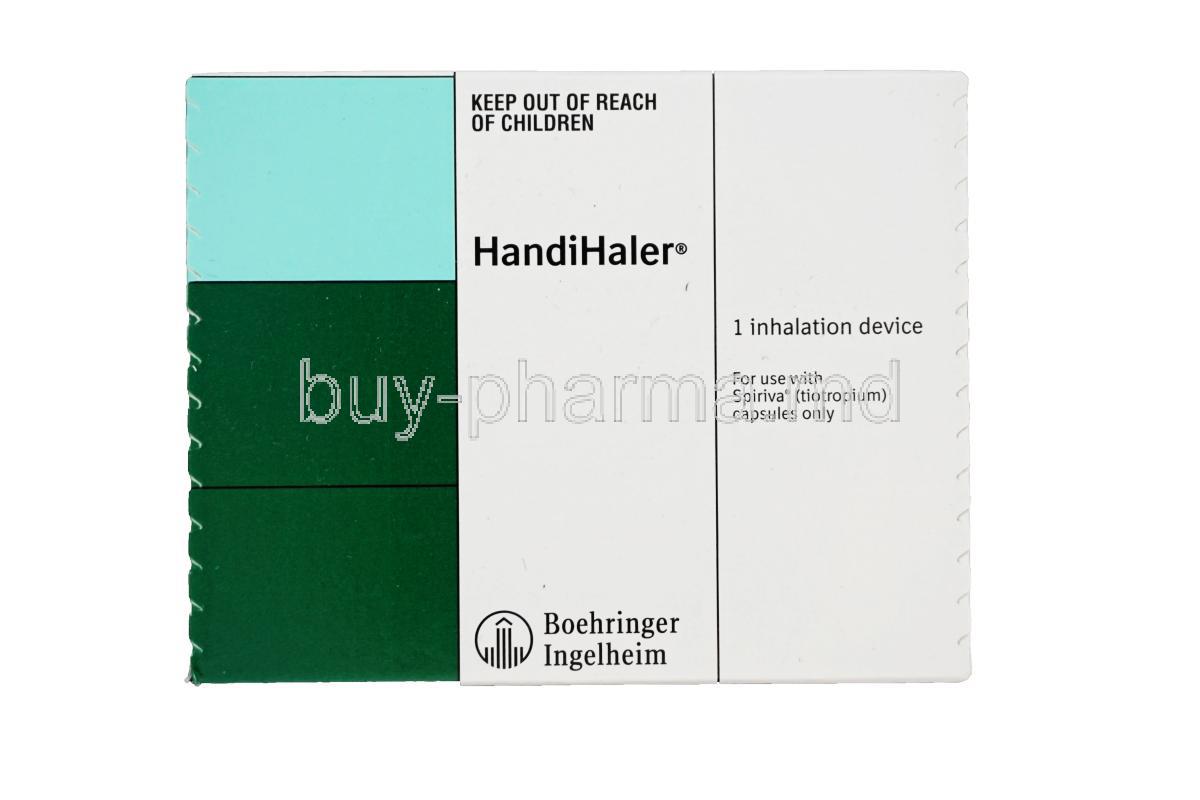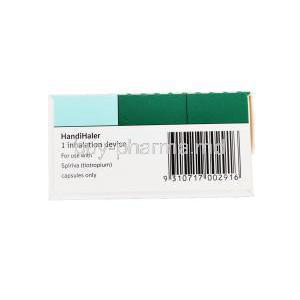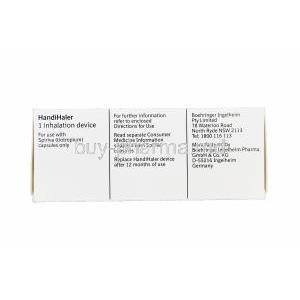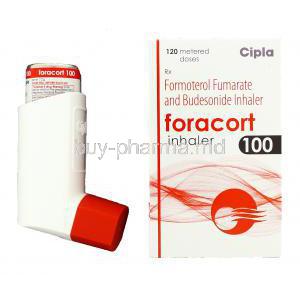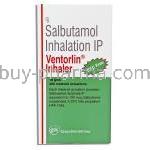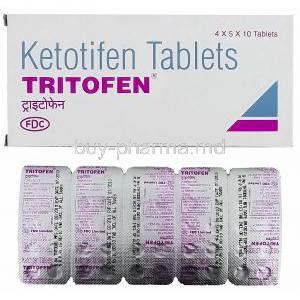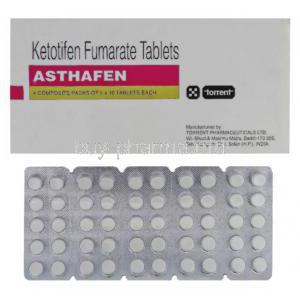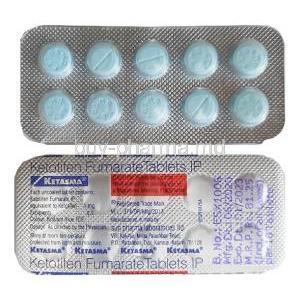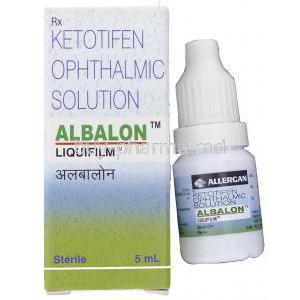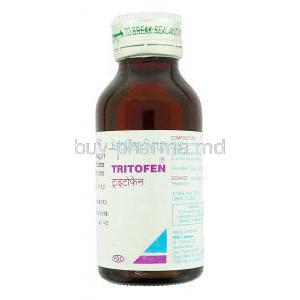1. Introduction to Spiriva HandiHaler
Spiriva HandiHaler, containing the active ingredient tiotropium bromide, is a prescription medication used for the management of chronic respiratory diseases. It belongs to a pharmacological class known as Long-Acting Muscarinic Antagonists (LAMA), which exert a prolonged bronchodilatory effect by inhibiting specific muscarinic receptors in the airways.
Approved by major regulatory authorities including the U.S. FDA and the European Medicines Agency, Spiriva has a well-established safety and efficacy profile. It was originally introduced for COPD treatment in the early 2000s and has since become a cornerstone therapy in respiratory medicine.
The HandiHaler is a dry powder inhaler (DPI) uniquely designed for delivering tiotropium directly into the lungs. It features a reusable inhalation device paired with single-use capsules that contain a measured dose of medication. The inhaler’s breath-actuated mechanism ensures precise delivery and minimal systemic absorption.
2. Approved Medical Uses of Spiriva HandiHaler
Spiriva HandiHaler is primarily indicated for the long-term maintenance treatment of chronic obstructive pulmonary disease (COPD), including chronic bronchitis and emphysema. It is not intended for the relief of acute symptoms but serves as a preventive therapy to:
- Maintain open airways and reduce airflow resistance in COPD patients
- Decrease the frequency and severity of COPD exacerbations
- Improve exercise tolerance and quality of life over time
Spiriva offers sustained bronchodilation, which can be particularly beneficial in patients with moderate to severe airflow obstruction who require continuous symptom control.
3. Off-Label and Investigational Uses of Spiriva HandiHaler
Beyond its approved indications, Spiriva HandiHaler is being explored for several off-label and investigational uses:
- Asthma maintenance therapy in adults: Used as an add-on treatment for poorly controlled asthma, especially in cases unresponsive to inhaled corticosteroids and long-acting beta agonists.
- Bronchiectasis management: Emerging evidence suggests tiotropium may reduce sputum production and improve lung function.
- Cystic fibrosis: Investigational use to alleviate mucus buildup and enhance pulmonary clearance.
- Refractory chronic cough: Examined for anticholinergic modulation of cough reflex sensitivity.
- Heart failure-related dyspnea: Potential adjunctive use in relieving pulmonary congestion symptoms.
4. How Spiriva HandiHaler Works: Mechanism of Action
Tiotropium bromide exerts its therapeutic effect by blocking the M3 muscarinic receptors found on airway smooth muscles. This action inhibits acetylcholine-mediated bronchoconstriction, leading to prolonged airway dilation.
The medication exhibits high selectivity for M1 and M3 receptors, sparing M2 receptors, which helps maintain autonomic balance. The result is a sustained reduction in bronchial smooth muscle tone, enhancing airflow and easing breathing.
Onset of action typically occurs within 30 minutes, with peak effects at around 3 hours. Its duration of bronchodilation extends up to 24 hours, allowing for once-daily dosing. Compared to LABAs and SABAs, Spiriva offers a longer duration and distinct receptor specificity, making it ideal for maintenance therapy.
5. Dosage and Administration Guidelines
The standard dosage for adults with COPD is one capsule (18 mcg of tiotropium) inhaled once daily using the HandiHaler device. Proper inhalation technique is crucial for optimal drug delivery.
- Place one capsule in the HandiHaler chamber
- Pierce the capsule by pressing the button
- Inhale the contents through the mouthpiece with a deep, steady breath
Administration should be consistent in timing each day. If a dose is missed, it should be taken as soon as remembered, but never doubled. No dosage adjustment is typically necessary for elderly patients, though clinical judgment should guide use in renal impairment or other vulnerable groups.
6. Composition and Formulation Details
Each Spiriva HandiHaler capsule contains:
- Active ingredient: Tiotropium bromide monohydrate (equivalent to 18 mcg of tiotropium)
- Inactive ingredient: Lactose monohydrate (as a carrier)
The formulation is designed exclusively for inhalation use with the HandiHaler device. Capsules must never be swallowed as they are not formulated for oral absorption.
7. Storage and Shelf Life Information
Spiriva capsules should be stored at a controlled room temperature between 15°C and 30°C (59°F to 86°F), away from moisture and heat. Each capsule should remain in its original blister until use to ensure potency and hygiene.
- Use capsules within 5 days after opening the blister pack
- Keep out of reach of children
- Clean the HandiHaler device at least once a month using warm water
The device must be completely dry before reuse to avoid powder clumping or dose inconsistency.
8. Common Side Effects of Spiriva HandiHaler
Spiriva HandiHaler is generally well tolerated, but some users may experience mild to moderate side effects, including:
- Dry mouth, due to reduced salivary secretion
- Constipation, often linked to its anticholinergic effect
- Headache and dizziness
- Cough or throat irritation immediately after inhalation
- Nasal congestion or sinus discomfort
Most of these symptoms are transient and tend to diminish with continued use.
9. Other Possible and Serious Side Effects
Though rare, some adverse effects require medical attention and discontinuation of treatment:
- Urinary retention: Difficulty urinating, especially in patients with prostatic hyperplasia
- Worsening of narrow-angle glaucoma: Eye pain, halos, and visual disturbances
- Tachycardia or heart palpitations
- Allergic reactions: Rash, facial swelling, or signs of anaphylaxis
- Paradoxical bronchospasm: Sudden difficulty in breathing after inhalation
Immediate discontinuation and medical intervention are warranted in such cases.
10. Drug Interactions and Contraindicated Combinations
Spiriva HandiHaler may interact with a range of medications, which could potentiate adverse effects or reduce therapeutic efficacy. Particular caution is advised when co-administered with other agents possessing anticholinergic properties.
- Anticholinergic agents: Concomitant use with drugs such as ipratropium or glycopyrrolate can amplify antimuscarinic side effects including dry mouth, urinary retention, and constipation. Such combinations are typically discouraged.
- Beta-agonists: While sometimes used in combination for severe airway disease, concurrent use of long-acting beta-agonists (LABAs) may increase cardiovascular strain and tremors, particularly in sensitive populations.
- Combination inhalers containing tiotropium: Co-administration of tiotropium via multiple delivery systems (e.g., HandiHaler and Respimat) is contraindicated due to the risk of overdose and exaggerated anticholinergic activity.
- Food, alcohol, and herbal supplements: No clinically significant food or alcohol interactions have been reported. However, certain herbal supplements with anticholinergic properties (e.g., belladonna) may exert additive effects and should be used with caution.
11. Warnings and Contraindications
Spiriva HandiHaler is contraindicated in patients with a known hypersensitivity to tiotropium, atropine or its derivatives, and lactose or milk proteins.
- Narrow-angle glaucoma: Use with caution due to the potential for increased intraocular pressure if the powder contacts the eyes.
- Urinary retention: May exacerbate pre-existing urinary difficulties, especially in men with prostatic hyperplasia.
- Paradoxical bronchospasm: Though rare, some individuals may experience acute airway constriction after inhalation. This requires immediate discontinuation and emergency evaluation.
- Not for acute relief: Spiriva is a maintenance medication and must not be used as a rescue therapy during sudden breathing problems.
12. Important Precautions Before and During Use
Proper use of Spiriva HandiHaler is critical for its effectiveness and safety. Several precautions should be observed:
- Ocular exposure: Accidental contact with the eyes can trigger blurred vision, pupil dilation, or increased intraocular pressure. Instruct patients to avoid directing the inhaled powder near the face.
- Device hygiene: Clean the inhaler once a month with warm water and dry it completely before reuse to maintain dose accuracy.
- Renal impairment: Since tiotropium is eliminated via the kidneys, patients with moderate to severe renal dysfunction may experience elevated systemic exposure. Monitoring is advised.
- Swallowing capsules: The capsules are for inhalation only. Swallowing them will not provide therapeutic benefit and may lead to gastrointestinal upset.
13. Careful Administration in Special Populations
Certain populations require tailored monitoring and clinical judgment when prescribing Spiriva HandiHaler:
- Cardiovascular conditions: Use with caution in patients with arrhythmias, recent myocardial infarction, or unstable angina, due to potential anticholinergic-induced cardiac effects.
- Hepatic or renal dysfunction: While no hepatic dose adjustment is generally required, renal impairment may necessitate increased vigilance due to reduced drug clearance.
- Smokers and ex-smokers: Higher risk of exacerbations and concurrent comorbidities (e.g., cardiovascular disease) requires a more holistic management approach.
14. Use in Elderly Patients
Spiriva HandiHaler has been extensively studied in geriatric populations and is generally well tolerated in this age group.
- Safety and efficacy: Clinical trials show consistent therapeutic effects across age brackets, including patients over 75 years.
- Dose adjustments: No routine adjustment is required; however, age-related renal decline may influence systemic exposure in some patients.
- Monitoring: Watch for anticholinergic side effects such as urinary issues, dizziness, and cognitive changes, which may be more pronounced in the elderly.
15. Use in Pregnant and Breastfeeding Women
Spiriva HandiHaler is classified under FDA pregnancy category C. Clinical data in pregnant women are limited.
- Pregnancy: Animal studies have shown adverse fetal effects at high doses. Use only if the potential benefit justifies the potential risk to the fetus.
- Lactation: It is not known whether tiotropium is excreted in human milk. Caution should be exercised when administered to nursing mothers.
- Clinical assessment: Always balance maternal respiratory benefit against potential neonatal risk, particularly in the third trimester.
16. Pediatric Use and Restrictions
Spiriva HandiHaler is not approved for use in individuals under the age of 18.
- Clinical trials: Limited studies have explored safety and efficacy in pediatric populations, primarily via other inhalation platforms such as Respimat.
- Off-label risks: Use in children is not recommended due to insufficient data on long-term safety and pharmacokinetics.
17. Overdose Symptoms and Emergency Management
Although rare, overdose of Spiriva HandiHaler may occur, particularly if capsules are mistakenly ingested or multiple doses are inhaled in a short time.
- Symptoms: Dry mouth, blurred vision, tachycardia, hallucinations, and difficulty urinating may be observed in overdose scenarios.
- Treatment: Management is supportive and symptomatic. No specific antidote exists.
- Emergency protocol: Patients should contact poison control or seek emergency medical care if overdose is suspected.
18. Handling and Disposal Precautions
Proper handling and environmentally responsible disposal of Spiriva HandiHaler are essential for safety and sustainability.
- Capsule handling: Keep capsules in the original blister packaging until use. Handle with dry hands to avoid degradation.
- Device hygiene: Rinse and dry the HandiHaler monthly to prevent clogging and ensure accurate dosing.
- Disposal: Used capsules and the device should be disposed of according to local pharmaceutical waste protocols. Do not flush or incinerate.

